How moisture affects your hardwood floors Part 1
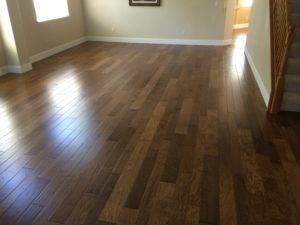 Hardwood floors are a living product. They move when relative humidity changes, they change color over time and they present more character as time goes by. Hardwood floors is the top choice when it comes to floors. No matter where you go in the Bay Area, California you will find wood floors in almost every home. It is in homes in Pinole, El Cerrito, Berkeley, Albany, Orinda, Lafayette and the list goes on. The wood floors vary from red oak to white oak in most cases. Some are maple, walnut and hickory. Some wood floors are top nailed and some are tongue and groove thicker floors. The one thing that is common to all homes is the presence of moisture. It doesn’t matter if you live closer to the bay, or farther out into the Walnut Creek and Clayton areas. Moisture affects wood floors every day. It can get inside your home in many different ways. The most common ways moisture affects your hardwood floors are:
Hardwood floors are a living product. They move when relative humidity changes, they change color over time and they present more character as time goes by. Hardwood floors is the top choice when it comes to floors. No matter where you go in the Bay Area, California you will find wood floors in almost every home. It is in homes in Pinole, El Cerrito, Berkeley, Albany, Orinda, Lafayette and the list goes on. The wood floors vary from red oak to white oak in most cases. Some are maple, walnut and hickory. Some wood floors are top nailed and some are tongue and groove thicker floors. The one thing that is common to all homes is the presence of moisture. It doesn’t matter if you live closer to the bay, or farther out into the Walnut Creek and Clayton areas. Moisture affects wood floors every day. It can get inside your home in many different ways. The most common ways moisture affects your hardwood floors are:
- Air
- Ground below in the crawl space
- Concrete slab
- Water leaks
We have all seen our wood floors exhibit movement between summer and winter. Lately with the drought in California; floors, sub floors and wood material in homes have shrunk more than the usual. As a wood flooring contractor I’ve been called many times to fix buckled and cupped floors. As a wood flooring inspector I have seen too many installation related failures as a result of excess moisture. The moisture from below like the soil in your crawl space and the concrete slab is there at all times. During the rainy season that moisture level is elevated. You don’t need to see water to determine a moisture problem. Wood flooring professionals measure moisture and relative humidity in different ways. Most tests are being done with moisture meters and relative humidity test kits. When hardwood floors are installed they must be acclimated first. Acclimation has nothing to do with time. It can last as long as weeks or as little as days. Wood floors are kiln dried to an average of 6%-9% moisture content. Our conditions in the Bay Area average between 9%-12%. Usually wood floors will need to gain moisture and expand before they are installed. When the floors are in nested bundles acclimating inside the house, it is easy for each board to move. If the floors are installed and then have to gain moisture and expand the result is cupping. Cupping will usually occur when there is a moisture imbalance in each board. When a floor board has no place to expand sideways, it is pushed upwards. That is why the edges are higher in each board and it looks like cupping. So, it is crucial that the wood floors are acclimated before installation. Every home is different. Some home owners have heat only, some have heat and air conditioning, some like it cold, some hot, some open the windows all day and some don’t. That is why professionals use moisture meters to determine the time needed for the wood to acclimate. Once acclimated the floors can be installed.
It is important to understand that the acclimation process is different for each wood specie and for each different product. For example, a 3/4” x 7” wide solid white oak floor would need different acclimation than a 1/2” x 3” engineered floor. It is up to the flooring professional to determine the appropriate acclimation time.
In most homes with crawl space the soil is damp year round. Some homes even get standing water during the winter months. A common solution to this problem is covering the soil with a moisture barrier. In other cases a sump pump is installed to remove the water from underneath the house, or I should say from underneath the wood floors. All that dampness and vapor go up into the sub floor and then into the wood floors. That is when the floors start to cup. I’ve heard many stories from home owners who had their wood floors installed during the summer, but it only until winter came that their wood floors started cupping (not floors that we installed, just to be clear).
Ensuring moisture barriers are in place is part of the job. It costs more money upfront but the alternative, which is a floor replacement costs a lot more. Nobody likes spending the holiday season dealing with a construction problem in their home like a failing wood floor.


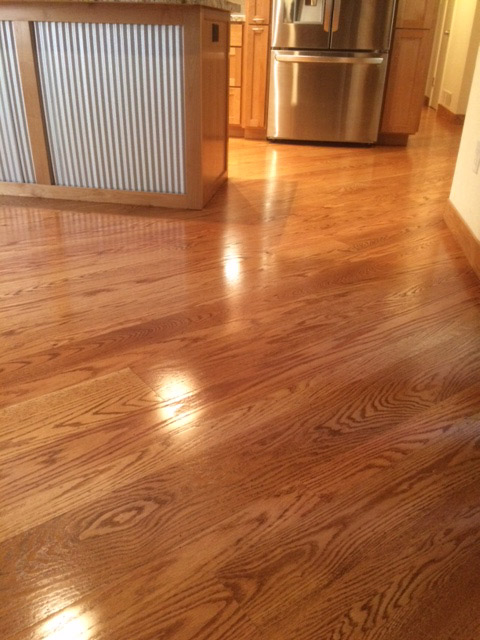
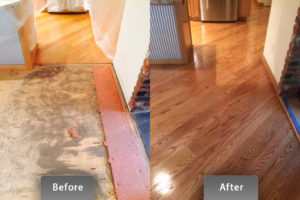
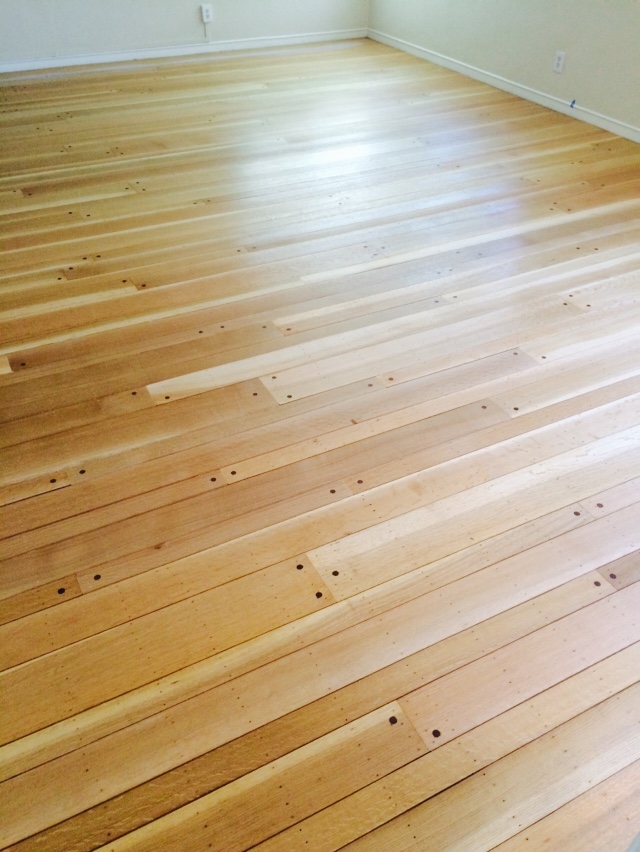 Not expensive – years ago wood floors were considered a high end choice and very expensive. With today’s growing demand hardwood floors had become the number one growing floor choice by home owners. Whether bamboo floors or exotic Brazilian cherry, wood floors are no longer just for the wealthy.
Not expensive – years ago wood floors were considered a high end choice and very expensive. With today’s growing demand hardwood floors had become the number one growing floor choice by home owners. Whether bamboo floors or exotic Brazilian cherry, wood floors are no longer just for the wealthy.
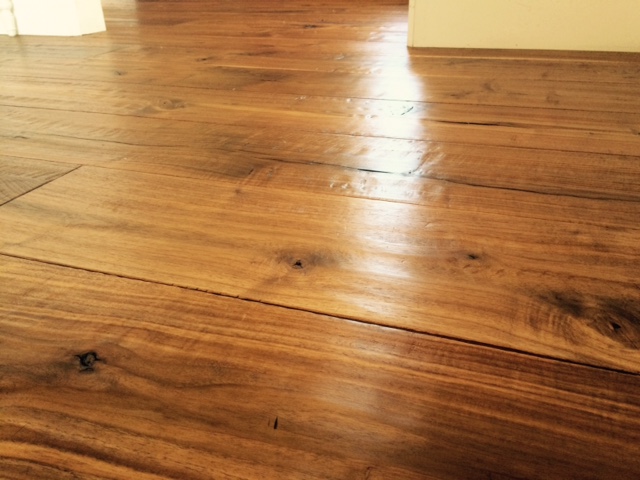

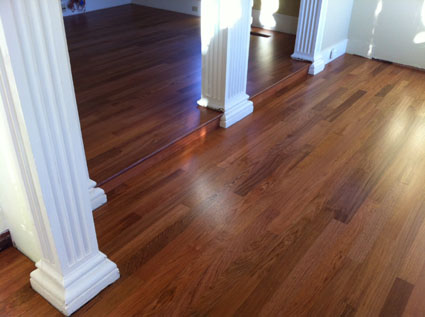
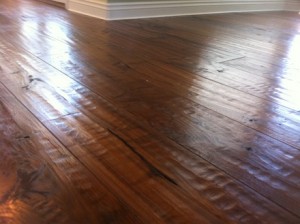 Hand scraped floors are beautiful and full of interesting elements; peaks and valleys, pronounced color variation, knots, mineral streaks and more. Much like any other wood floor it requires regular cleaning and maintenance. Here are a few things you should do to preserve the beauty of your hand scraped floors:
Hand scraped floors are beautiful and full of interesting elements; peaks and valleys, pronounced color variation, knots, mineral streaks and more. Much like any other wood floor it requires regular cleaning and maintenance. Here are a few things you should do to preserve the beauty of your hand scraped floors: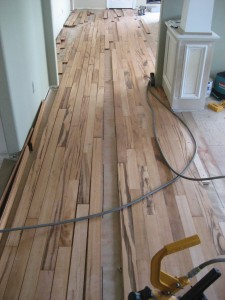 They have weird names that are hard to pronounce. They come from countries you didn’t know existed (let’s face it – you didn’t). Everyone hates working with them: you, your nailers, your saw blades, even your finish! Yes, I’m talking about exotic woods. In our trade we are familiar with names like Brazilian Cherry, I’pe, and Padauk which are more readily available. Some woods are so rare and expensive they are sold by weight like Cocobolo (
They have weird names that are hard to pronounce. They come from countries you didn’t know existed (let’s face it – you didn’t). Everyone hates working with them: you, your nailers, your saw blades, even your finish! Yes, I’m talking about exotic woods. In our trade we are familiar with names like Brazilian Cherry, I’pe, and Padauk which are more readily available. Some woods are so rare and expensive they are sold by weight like Cocobolo (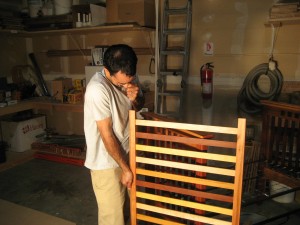 Sanding and finishing: here is a dilemma = I should start with a 36 grit because this is a really hard wood but, because it is such a hard wood how in the world am going to take those scratches out? Well, you are right. Better to start with 50 or 60 and change your abrasive frequently instead of starting with 36 or 40. Trying to get scratches out of Ipe’ is like trying to…well…let’s not even go there.
Sanding and finishing: here is a dilemma = I should start with a 36 grit because this is a really hard wood but, because it is such a hard wood how in the world am going to take those scratches out? Well, you are right. Better to start with 50 or 60 and change your abrasive frequently instead of starting with 36 or 40. Trying to get scratches out of Ipe’ is like trying to…well…let’s not even go there.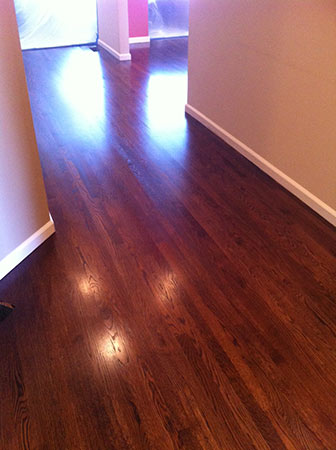 I get more calls every week to refinish wood floors in order to make them darker. We no longer talk medium colors but dark, rich browns and blacks. A lot of home owners don’t realize that the labor involved in achieving those dark looking floors is pretty intense. The amount of work to produce a dark floor is greater than producing a natural floor. That is why the price tag is higher.
I get more calls every week to refinish wood floors in order to make them darker. We no longer talk medium colors but dark, rich browns and blacks. A lot of home owners don’t realize that the labor involved in achieving those dark looking floors is pretty intense. The amount of work to produce a dark floor is greater than producing a natural floor. That is why the price tag is higher.